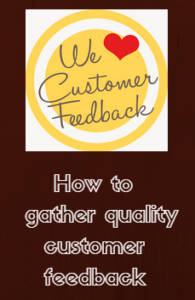Short of inventing a time machine there’s no guaranteed method, which makes an interview one of the most important tools you have to vet a customer candidate.
The right interview questions reveal more useful information about a candidate than their work history, because they force interviewees to think on their feet, drawing on their experience to answer pointed questions. Seeing how they react speaks volumes about how they will handle real-life situations, and will help you avoid wasting time and energy on hiring the wrong person.
Divide these interview questions among your hiring team, and you’ll get the information you need to hire top customer service talent.
Structuring Your Interview Q&A
The best interviews are not strict question-and-answer patterns; they’re structured conversations that draw out candidates’ attitudes, strengths and challenges.
Encourage candidates to use a storytelling approach: Tell them you’re not looking for hypothetical “this is what I would do if that happened” answers. Ask for specific, detailed stories about their experiences and their behaviors in those situations.
Don’t be afraid to dig deeper: Your questions are only starting places for conversational topics. If the answer is interesting or concerning, ask follow-up questions to uncover more details.
It’s OK to ask similar questions: Often the best stories will come out when a candidate has had a few minutes to think about an earlier question. By revisiting important areas, you give them the best chance to reveal their character and skill to you.
Don’t rush to fill silence: It’s OK to let your candidates sit quietly before they answer a question. It can give them time to formulate their thoughts, and it can also result in them revealing more than they initially intended.
Customer service approach
1.What does good customer service mean to you?
2.What appeals to you about this role specifically?
3.What’s the best customer service you’ve ever received? Why?
4.Can you tell me about a time you received poor customer service?
5.Is there a difference between customer service and customer support?
Emotional intelligence, empathy and behavior
6.Can you tell me about a time when you were proud of the level of service you gave a customer?
7.Have you ever dealt with an unreasonable customer? How did you handle it, and how would you handle it today?
8.Have you ever bent the rules in assisting a customer? Tell me the situation and the outcome.
9.In your past work, have you ever received negative feedback from a customer? What did you do with that feedback?
10.Can you tell me about a customer that you found difficult to understand, and how you approached that interaction?
11.Can you describe a time when you had to say “no” to an important customer’s request?
12.What’s the best way to help a customer who has worked with multiple agents and hasn’t received the help they need?
Problem solving
13.Have you had a time when a customer was reporting a technical issue that you didn’t know the answer to? What was your approach, and how did it end up?
14.Can you tell me about a situation with a customer when there wasn’t a clear policy to use, and you needed to make a judgement call? How did you approach your decision, and what happened?
15.Can you give me an example of a situation where there were major problems with your product/service, and you needed to respond without having all the answers yet?
Communication skills
16.Can you give an example of how you handled alerting a customer when your product/service caused a major problem?
17.When responding to a customer, how do you decide what information to include, and what to leave out?
18.Can you tell me about a time when you needed to convince a customer or a teammate to change the way they were working (e.g., adopt a new procedure or modify their language), and how you went about that?
Attitude and approach to work
19.What’s the last new skill you learned? Why did you choose that skill, and how did you learn it?
20.Can you tell me about a time when you made a great contribution to your team?
21.What’s the next book I should read? Why?
22.What are you better at today than you were this time last year?
23.What do you think makes a good teammate?
Do you have unusual interview questions you’ve had success with in past interviews? Share in the comments below!



